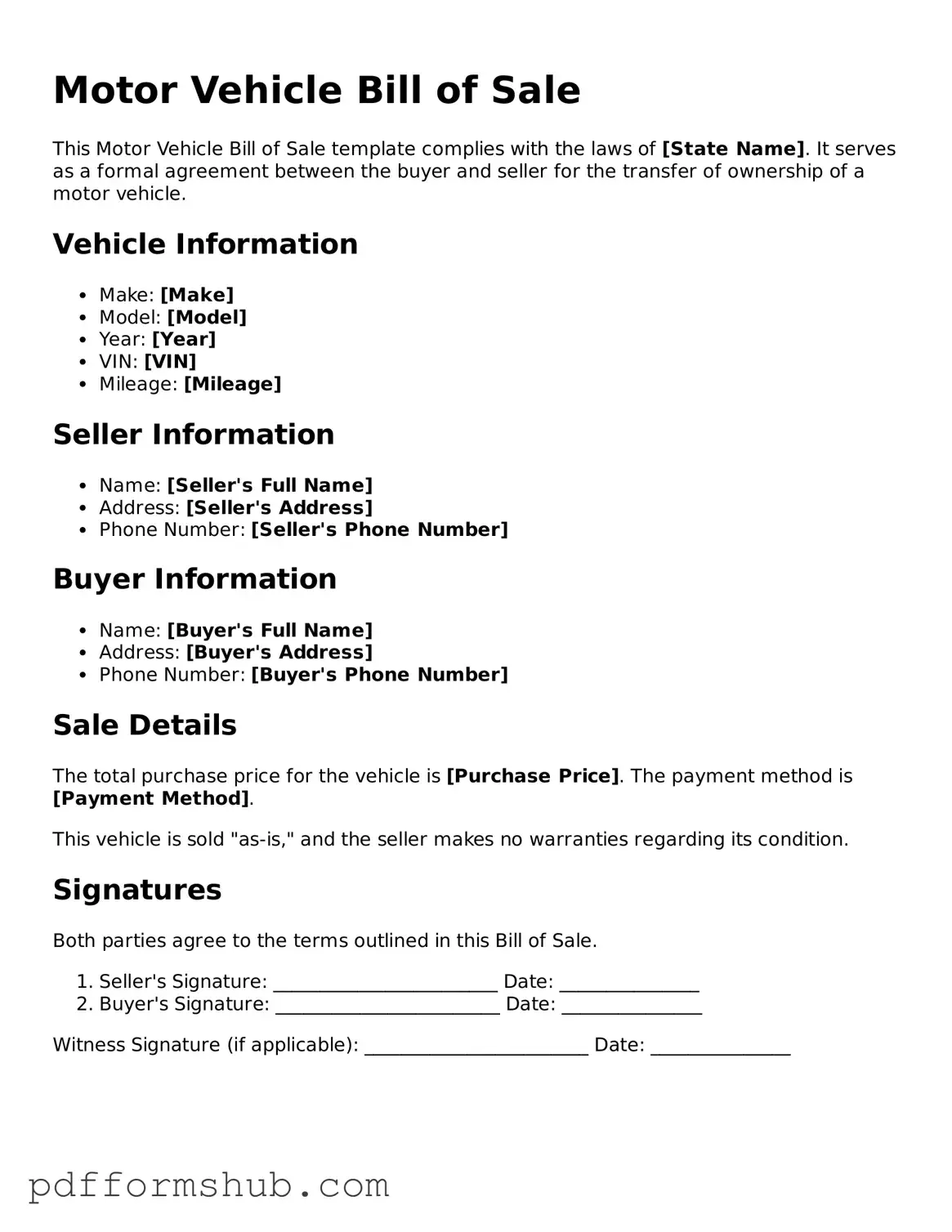When engaging in the buying or selling of a vehicle, the Motor Vehicle Bill of Sale form serves as a crucial document that formalizes the transaction between the seller and the buyer. This form typically includes key details such as the vehicle identification number (VIN), make, model, year, and odometer reading at the time of sale, which collectively help to clearly identify the vehicle being transferred. Additionally, the form outlines the purchase price agreed upon by both parties, ensuring transparency in the financial aspect of the transaction. It often includes spaces for the names and addresses of both the buyer and seller, as well as the date of the sale, creating a comprehensive record of the exchange. Furthermore, many states require the seller's signature to validate the sale, while some forms also provide a section for the buyer's signature, emphasizing the mutual agreement. In certain jurisdictions, the Bill of Sale may also serve as a temporary title until the new owner registers the vehicle in their name, highlighting its importance in the vehicle transfer process. Overall, the Motor Vehicle Bill of Sale form not only protects the interests of both parties involved but also ensures compliance with state regulations, making it an indispensable tool in any vehicle transaction.
